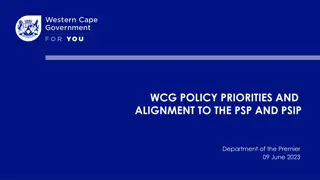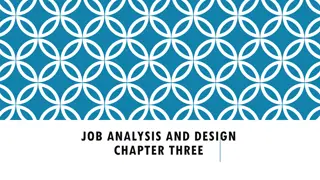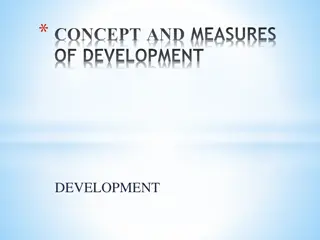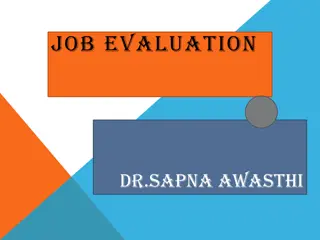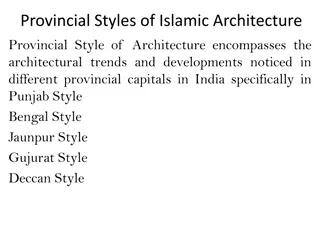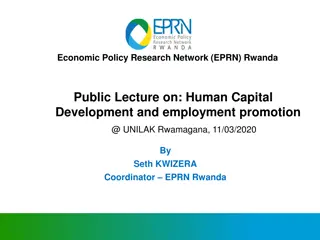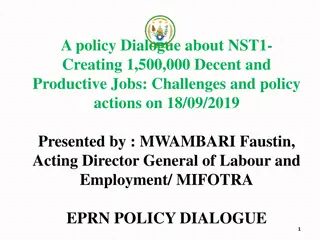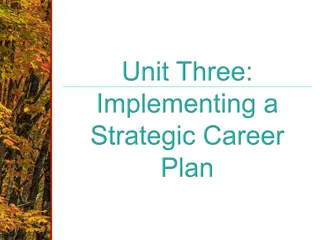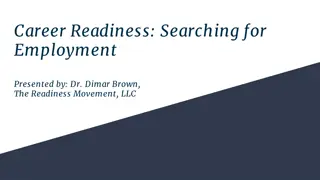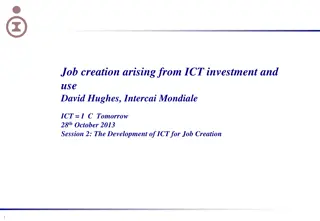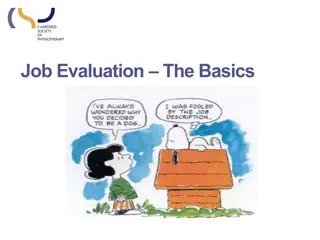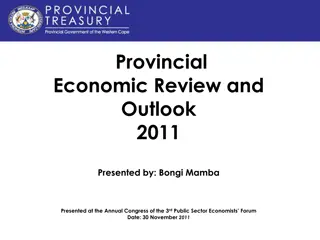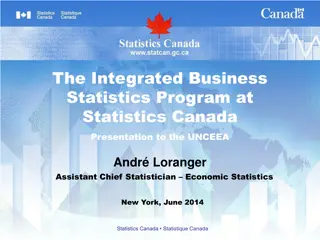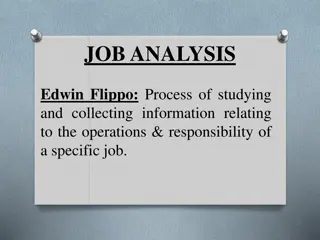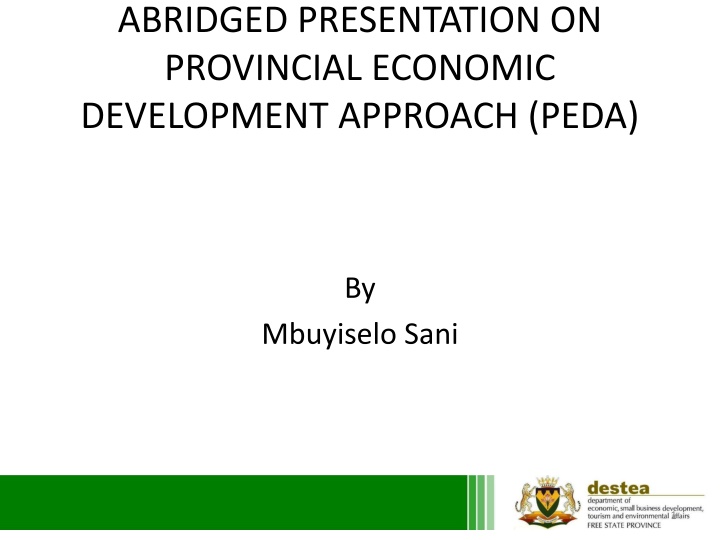
Provincial Economic Development Approach: Focusing on Growth and Job Creation
A presentation on the Provincial Economic Development Approach (PEDA) by Mbuyiselo Sani, highlighting the vision, pillars, and desired outcomes. It covers the legislative mandate of DESTEA and the focus on inclusive economic growth, job creation, and key drivers such as agriculture, mining, manufacturing, transport, and tourism. The significance of investing in productive sectors like manufacturing for stimulating overall economic growth is emphasized, drawing insights from Nicholas Kaldor's manufacturing as an engine of growth hypothesis.
Download Presentation

Please find below an Image/Link to download the presentation.
The content on the website is provided AS IS for your information and personal use only. It may not be sold, licensed, or shared on other websites without obtaining consent from the author. If you encounter any issues during the download, it is possible that the publisher has removed the file from their server.
You are allowed to download the files provided on this website for personal or commercial use, subject to the condition that they are used lawfully. All files are the property of their respective owners.
The content on the website is provided AS IS for your information and personal use only. It may not be sold, licensed, or shared on other websites without obtaining consent from the author.
E N D
Presentation Transcript
ABRIDGED PRESENTATION ON PROVINCIAL ECONOMIC DEVELOPMENT APPROACH (PEDA) By Mbuyiselo Sani 1
FSGDS: Vision & Pillars FSGDS s aim: improve the quality of life of the FS people through inclusive economic growth, human development and social cohesion. FSGDS pillars: Inclusive economic growth and sustainable job creation; education, innovation and skills development; improved quality of life; sustainable rural development; social cohesion; and Good governance. 2
DESTEA Legislative Mandate The DESTEA s constitutional mandates have been derived from Schedules 4 and 5 of the Constitution of the Republic of South Africa, which requires the Department to oversee and administer the following: Trade Tourism Casinos, racing, gambling and wagering Consumer protection Environment Affairs Industrial promotion and business development Provincial public enterprises Liquor licences and control of undertakings that sell liquor to the public 3
FSGDS DESIRED OUTCOMES An inclusive economic growth and sustainable job creation. o provincial economic growth rate should increase from 2.5% in 2011 to 7% in 2030 o to reduce the unemployment rate from 32% in 2012 to 6% in 2030 4
FSGDS: Drivers for pillar 1 Pillar 1 (inclusive growth and sustainable job creation) drivers: agriculture; mining; manufacturing; transport; and tourism. 5
PEDS & FSGDS PEDA based on pillar 1 of FSGDS (chapter 4) PEDA philosophy: investing in the productive sectors of the economy will stimulate growth in the services sectors such as tourism, finance, trade, government and household services and ultimately in the whole economy (2016: 11) Focus on comparative advantage of the Province Development of value chains 6
Why Productive Sectors: The Case of Manufacturing Nicholas Kaldor s manufacturing as an engine of growth hypothesis ADB Group s African Economic Outlook, 2019 Studied 20 African countries representing about 80% of the African GDP Concluded that Manufacturing-driven growth acceleration episodes increased employment elasticity by about 0.017 percentage point (or by 3 percent) - three times higher than effects of services-driven episodes (0.005 percentage points). Manufacturing-driven growth acceleration episodes have larger cross-sector effects 0.034 percentage point higher growth elasticity of employment for manufacturing, 0.038 for services, 0.022 for agriculture, and 0.053 for mining. In addition, mining-driven growth acceleration episodes had a similar robust effect as manufacturing-driven episodes . The productive sectors are labour intensive and absorb unskilled and semi-skilled workers. Nicholas Kaldor, 1966. Causes of Growth and Stagnation in the World Economy 7
FREE STATE PROVINCIAL ECONOMIC DEVELOPMENT APPROACH PROCESS FLOW MAP Exploitation of comparative advantage Infant industry protection and promotion Identification of Comparative advantage Impact assessment Export promotion Digital economy Creation of conducive environment - Artificial Intelligence Implementation of bilateral trade agreements Economic development outcome indicators -Big Data Analysis - Digital Hubs Agriculture -Red Tape Reduction - Enhanced State Capability - Promotion of PPP - Internet of Things - Broadband - Improved Financial Management - Improved economic and digital infrastructure Theory of Change Green economy Implementation of regional customs union Mining - Waste Management and Recycling Outputs - Renewable Energy Private sector led investment Imposing of levies and tarrifs to protect infant industries Implementation of AfCFTA Manufacturing Processes Development of local, regional and global value chains Use incentives to promote infant industries Tourism Inputs Promotion of industrialisation instead of individual firms Transport Up-stream, mid-stream and down-stream goods and services producing firms developed 8
GENERIC VALUE CHAIN AND STAKEHOLDERS PROCESSING/ MANUFACT- URING WHOLESALING & RETAIL PRODUCTI ON CONSUMPTION PROCESS INPUT FINISHED GOODS: CARS; TUBING PIPES RAW MATERIALS; EQUIPMENT ENGINEERING END PRODUCT VALUE-ADDED PRODUCT FINISHED GOODS GOODS LABELLING MARKETING FINANCE; TRANSPORT; WAREHOUSING RESEARCH; FINANCE; TRANSPORT; ELECTRICITY; SKILLS DEVELOPMENT RESEARCH & INNOVATION; FINANCE; TRANSPORT; CONSTRUCTION MARKETING SELLING FINANCIAL SERVICES RESEARCH & INNOVATION; INSURANCE TRANSPORT PACKAGING COMMUNICATION SERVICES INVESTORS MANAGERS WORKERS; FINANCIERS; RESEARCH INSTITUTIONS INVESTORS MANAGERS WORKERS; FINANCIERS; RESEARCH INSTITUTIONS ENGINEERS OEM FINANCIERS; INVESTORS; RESEARCH INSTITUTIONS INVESTORS MANAGERS WORKERS; FINANCIERS; RESEARCH INSTITUTIONS CONSUMERS: HOUSEHOLDS; GOVERNMENT; BUSINESSES; MARKETING AGENCIES; RETAILERS ACTORS 9
PEDA IMPLEMENTATION PROCESS FLOW Lead Partner Use Annexure A to list all viable high impact projects Use Annexure B to prioritise first 5-year projects Identify all applicable objectives from PEDA Use Annexure C to prioritise 1st year projects Revision of PEDA Identify key partners for each project DESTEA reports to Cluster, EXCO, etc Together identify tasks for each project Remedial action by implementers Set Submit quarterly reports to DESTEA DESTEA conducts M&E Commence project implementation reasonable start and end dates Together identify required resources Allocate responsibility for implementation 10
Thank you 11


